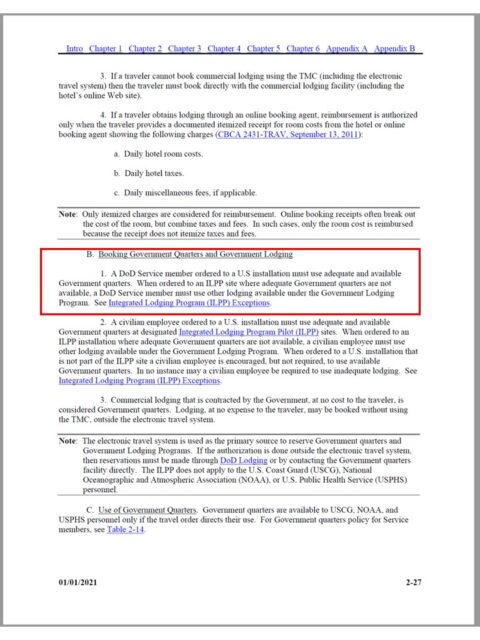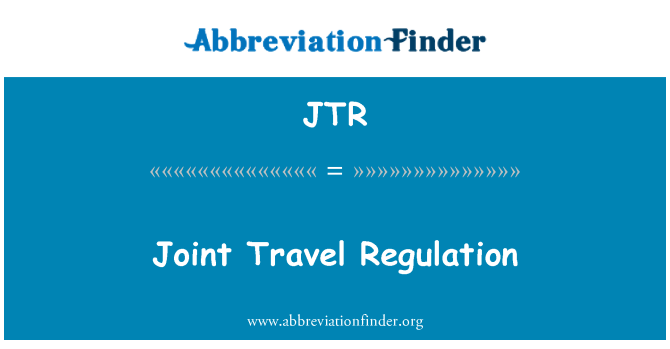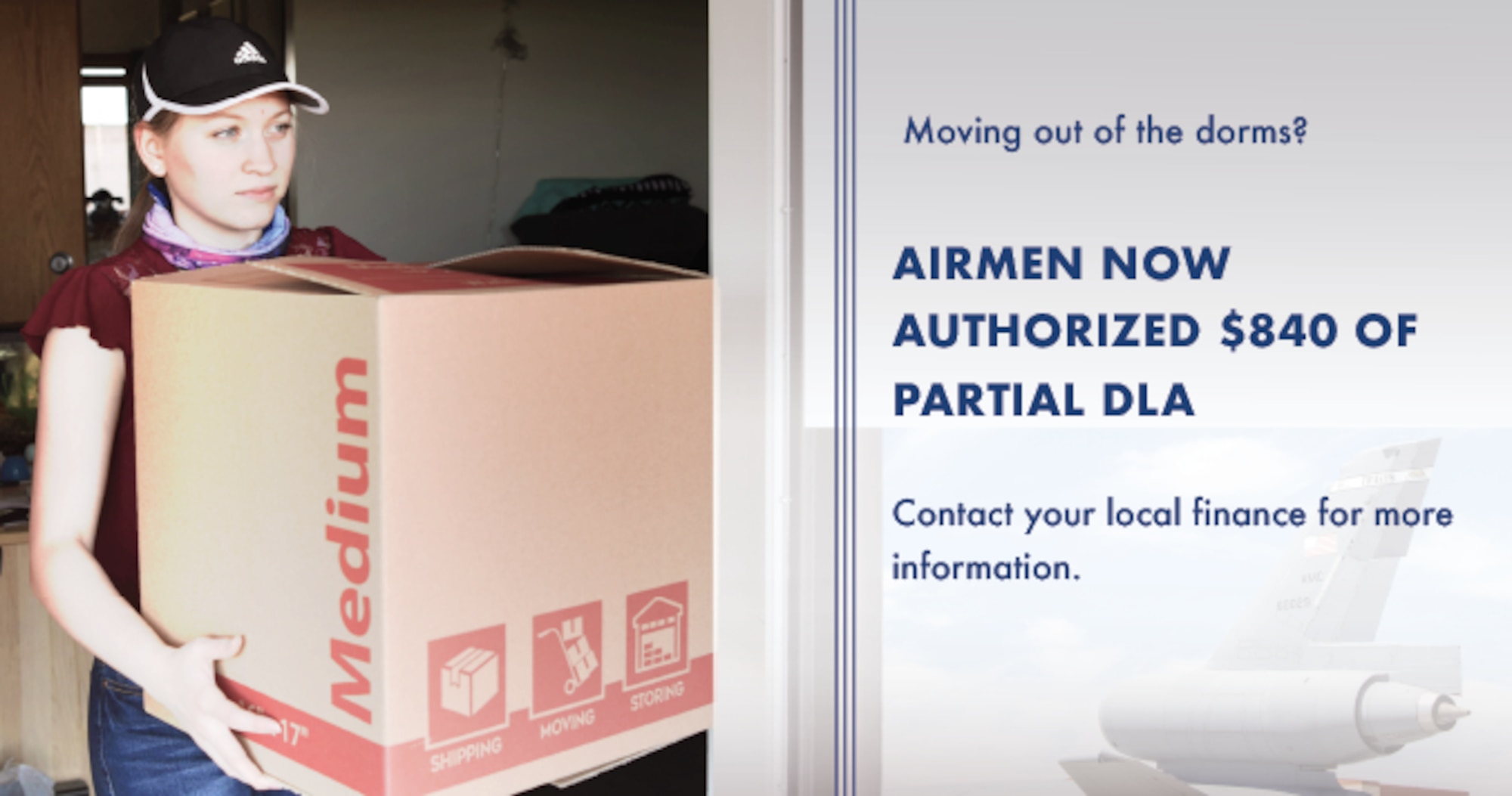Jtr Joint Travel Regulation
Exploring the Joint Travel Regulations for Military Personnel
The Joint Travel Regulations (JTR) is an important document that governs the travel policy for members of the military. Whether you are a service member or a family member, it is crucial to understand the rules and regulations outlined in the JTR to ensure a smooth travel experience. In this article, we will delve into the key aspects of the JTR, providing valuable insights and tips for military personnel.
1. What is the Joint Travel Regulations (JTR)?
The Joint Travel Regulations (JTR) is a set of regulations established by the Department of Defense (DoD) that provides guidance and policies for official travel by military personnel and their dependents. It covers various aspects such as travel allowances, per diem rates, transportation, lodging, and other related expenses. The JTR serves as a comprehensive guide for members of the military to ensure cost-effective and efficient travel arrangements.

Image: The Joint Travel Regulations - Military Dollar
2. Understanding Travel Allowances and Per Diem Rates
One of the essential aspects covered by the JTR is travel allowances and per diem rates. Travel allowances are provided to military personnel in order to reimburse them for authorized expenses incurred during official travel. This may include transportation costs, lodging, meals, and incidental expenses.
Per diem rates refer to the daily allowance provided to cover expenses for lodging, meals, and incidental expenses during official travel. The JTR outlines specific rates based on the location and duration of the travel, ensuring that military personnel are provided with adequate financial support.

Image: Joint Travel Regulation Analysis - TDY Furniture Rentals
3. Traveling with Dependents and Family Members
The JTR also addresses the rules and regulations for traveling with dependents and family members. It outlines eligibility criteria, travel entitlements, and requirements for dependent travel. Whether you are planning a vacation or a permanent change of station (PCS), it is important to review the JTR provisions to ensure that you understand the travel benefits available to your family members.
4. FAQs - Frequently Asked Questions
4.1 How do I determine the per diem rates for my travel destination?
The JTR provides a per diem allowance table that specifies the rates for various travel locations. You can refer to this table or use the Defense Travel Management Office (DTMO) Per Diem Lookup tool to find the applicable rates for your destination.
4.2 Are there any restrictions on the choice of transportation?
The JTR allows for several transportation options, including commercial air travel, government-provided transportation, and personally owned conveyance. However, there may be restrictions depending on the location, availability, and duration of the travel. It is advisable to check the JTR and consult with your travel coordinator to determine the most appropriate transportation method.
4.3 How can I claim reimbursement for my travel expenses?
To claim reimbursement for travel expenses, you must submit a properly completed travel voucher along with supporting documentation. The JTR specifies the required documents and procedures for reimbursement. It is crucial to keep track of all receipts and travel-related expenses to ensure accurate reimbursement.
Conclusion
The Joint Travel Regulations (JTR) play a vital role in governing the travel policy for military personnel and their dependents. Understanding and adhering to the JTR provisions is crucial to ensure a smooth and financially sound travel experience. By familiarizing yourself with the JTR, you can make informed decisions regarding travel allowances, per diem rates, and travel entitlements. If you have any doubts or questions, always consult with your unit's travel coordinator or refer to the official JTR documentation provided by the Department of Defense.
The Joint Travel Regulations - Military Dollar
 Image Source : militarydollar.com
Image Source : militarydollar.com Joint Travel Regulations
 Image Source : www.defensetravel.dod.mil
Image Source : www.defensetravel.dod.mil jtr dod allowance transportation diem administering developing administrative maintaining
Joint Travel Regulations
 Image Source : www.defensetravel.dod.mil
Image Source : www.defensetravel.dod.mil jtr dod diem office allowance transportation administrative developing maintaining administering
Joint Federal Travel Regulation (JTR) - Volume 1 By US Department Of
 Image Source : www.goodreads.com
Image Source : www.goodreads.com JTR 定义: 联合旅行章程 - Joint Travel Regulation
 Image Source : www.abbreviationfinder.org
Image Source : www.abbreviationfinder.org JTR Update Provides Relief To Dorm Airmen > Air Force's Personnel
 Image Source : www.afpc.af.mil
Image Source : www.afpc.af.mil Joint Travel Regulation Analysis - TDY Furniture Rentals
 Image Source : tdyrentals.com
Image Source : tdyrentals.com Joint Federal Travel Regulation (JTR) - Volume 2 (Department Of Defense
 Image Source : www.amazon.in
Image Source : www.amazon.in Joint federal travel regulation (jtr). Joint federal travel regulation (jtr). Jtr dod allowance transportation diem administering developing administrative maintaining. Jtr dod diem office allowance transportation administrative developing maintaining administering. Joint travel regulations